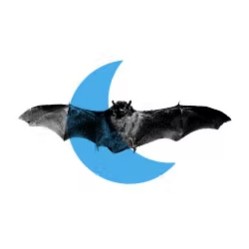PUBLISHED: October 29, 2021 By Cullen Geiselman
October is by far the best month of the year, at least for me, a bat biologist by training and bat enthusiast by birth (it’s no surprise that October is my birth month!).
When I tell people that I study bats, they ask if I have been to Austin to see the bats under Congress Avenue Bridge. Why, yes, I tell them! But there’s no need to drive to our state’s capital to witness nature’s spectacular dusk ballet of bats leaving their day-time shelter to take to the skies to feed on literally tons of insect pests each night. You can do it right here in Houston!
In Houston, October brings a change in the angle of the light; the days get shorter and cooler and the evenings are full of magic. Night-flying mammalian magic
The greater Houston region is home to a dozen bat species, the largest of which weighs in at just over one ounce and the smallest weighs less than a quarter. For a mammal with a wingspan of 10-15 inches, that’s not very heavy, which is good if your main means of locomotion is flight and you’ve got to keep your weight to a minimum to decrease energy needed to propel yourself forward. This is one of the reasons bats hang upside down. Most have tiny legs and feet that don’t weigh them down and are great for clinging to the surface of a tree or bridge where they hide during the day, but not much good for anything else. Now imagine you are a bat, hanging upside down by your tiny feet, all you have to do to take flight is to open your wings, release your foothold, and start flapping.

With plenty of places to hide out during the day, plenty of bugs to eat at night, and plenty of open water available to drink on the wing, bats can be found in most Houston neighborhoods. Just go out at dusk and look up to see little fluttering silhouettes against the evening sky. You can tell a bat from a bird because bats fly erratically zipping this way and that while birds sometimes glide and appear to fly evenly and straight forward.
One of the best things about being a bat enthusiast is seeing the surprise and joy on a person’s face that has just witnessed bats flying overhead right in their own part of town. They are seeing their familiar world in a new light. I like to add sound to the “bat show” by bringing along my bat detector, a device that translates the high frequency sounds bats make when echolocating (their “sonar” system) to something we humans can hear. So when you are looking up and seeing little silhouettes swooping and swirling, you can hear the soundtrack of their calls in real time.

If the change in the weather in October inspires you to go out at dusk to see bats take to the air, here are a few of my favorite places to visit:
- The Watonga Bridge along White Oak Bayou Greenway
- Waugh Street Bridge over Buffalo Bayou, located in Buffalo Bayou Park, managed by Buffalo Bayou Partnership
- The meadow at the Houston Arboretum and Nature Center
BAT FACTS
Bats drink water while they fly, so an open source of fresh water is important.
A single bat can fly up to 100 miles each night in search of food and can fly up to 60 miles an hour.
Bats can fly up to 10,000 feet in the air.
A single bat can eat up to 1,200 mosquito-sized insects every hour, and each bat usually eats 6,000 to 8,000 insects each night.
Mexican Free-tailed bats are on average 3.5 inches in length and have a wingspan of 11 inches. They weight approximately 12.3 grams or 0.43 ounces.
Bats use echolocation to find their food while flying and are not truly blind.
Bats can live up to 18 years.
